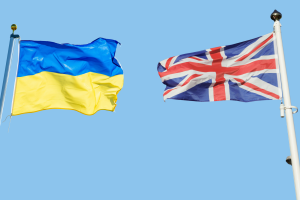Sea ice conjures images of vast swathes of floating white landscapes, and invokes the excitement of the age of exploration. The peril of navigating the ice pack continues to add to the thrill of polar voyages even as our ships have graduated from sturdy wooden vessels to the powerful steel-hulled vessels of today. Yet sea ice is so much more than a source of inspiration for artists or a challenge for thrill-seekers, it is a critical component of the cryosphere and a key contributor of planetary albedo. Its formation and melt are integral to the global overturning ocean circulation that redistributes heat across the planet.
Professor Yueng-Djern Lenn is a polar physical oceanographer and her interests lie in understanding the physical processes integral to ocean overturning that impact climate in the polar oceans. Her Southern Ocean research has focused on Drake Passage eddy heat and momentum fluxes, the surface Ekman layer that constitute the upper limb of the overturning circulation, and diapycnal mixing driving water mass transformation in the thermocline at the Antarctic continental slope. Her Arctic research focuses on water mass transformations occurring in the continental shelf seas and along the Arctic continental slope that link the Arctic to the global overturning circulation, most recently investigating the role of different mixing mechanisms (i.e. double diffusion and turbulent mixing drive by tides or winds) in fluxing heat and other properties from the warm Atlantic Water into overlying Arctic halocline and mixed layer.
Sea ice export from formation sites to lower latitudes impacts regional freshwater budgets in complex ways with feedbacks on climate that are still uncertain. Like all other parts of the cryosphere, sea ice is vulnerable to climate change, not least because warming rates are subject to polar amplification. This has resulted in one of the most striking examples of climate change being the loss of Arctic summer sea ice, while the trend is less clear in Antarctic sea ice. Simply from the difference in phase alone, it is obvious that the liquid ocean must pretty much be always warmer than the solid ice floating on it, and is therefore a source of heat that can drive melting. At both poles, this heat source is enhanced by the import of warm lower latitude waters polewards that due to is salt content is somewhat insulated from the ice by fresher polar surface waters above. This makes both polar oceans "upside-down" in their temperature structure relative to the low and mid-latitudes where the highest temperatures are found in the sunlit waters at the surface. Apart from the heat of lower-latitude origin, the exposed dark polar ocean absorbs more solar radiation than the reflective white ice, storing this energy as heat which can also contribute to melt from below.
“We will explore the myriad ways in which ocean processes, across a variety of scales and in some unexpected ways, release heat towards the ice and how these have changed as the sea ice has declined over the last few decades. We will conclude by considering the implications for climate and the ocean primary productivity.”
This lecture will be given in English.
Refreshments will be available after the lecture.





